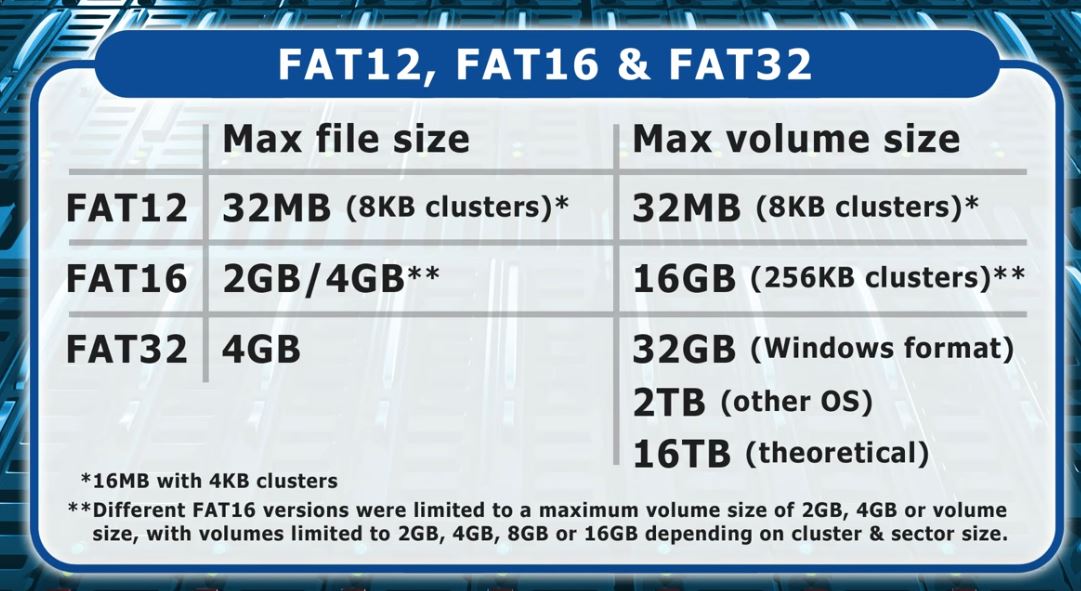
A file system provides a way of organizing a drive. It specifies how data is stored on the drive and what types of information can be attached to files—filenames, permissions, and other attributes.
Windows supports three different file systems which are NTFS, FAT32 and exFAT.
Mac OS X supports HFS+, FAT32, and exFAT, with read-only support for NTFS.
Linux (Ubuntu) supports Ext2, Ext3, Ext4 and Btrfs. Ubuntu is capable of reading and writing files stored on Windows formatted partitions Fat32, exFat and NTFS
Android doesn't support NTFS file system. If the SD card or USB flash drive you insert is NTFS file system, it won't be supported by your Android device. Android supports FAT32/Ext3/Ext4 file system. Most of the the latest smartphones and tablets support exFAT file system.
As you can see from the list above, exFat is supported by all operating systems.
The Main Difference between the files systems is the Size of the Files that can be stored. FAT32: 4GB, exFat and NTFS: 16 Exabytes (EB). Another Difference is the Partition Size.

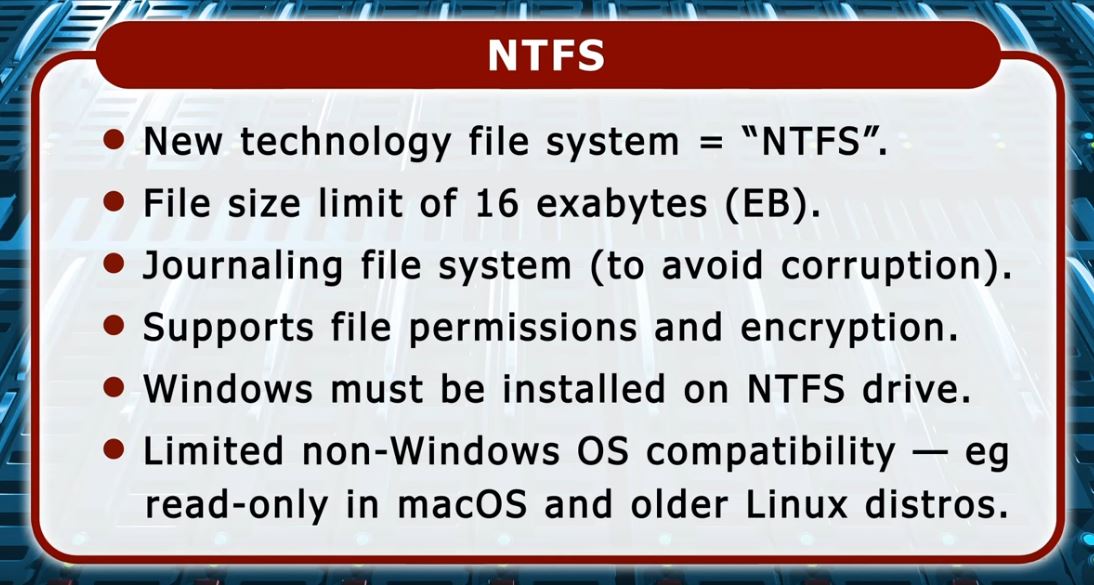
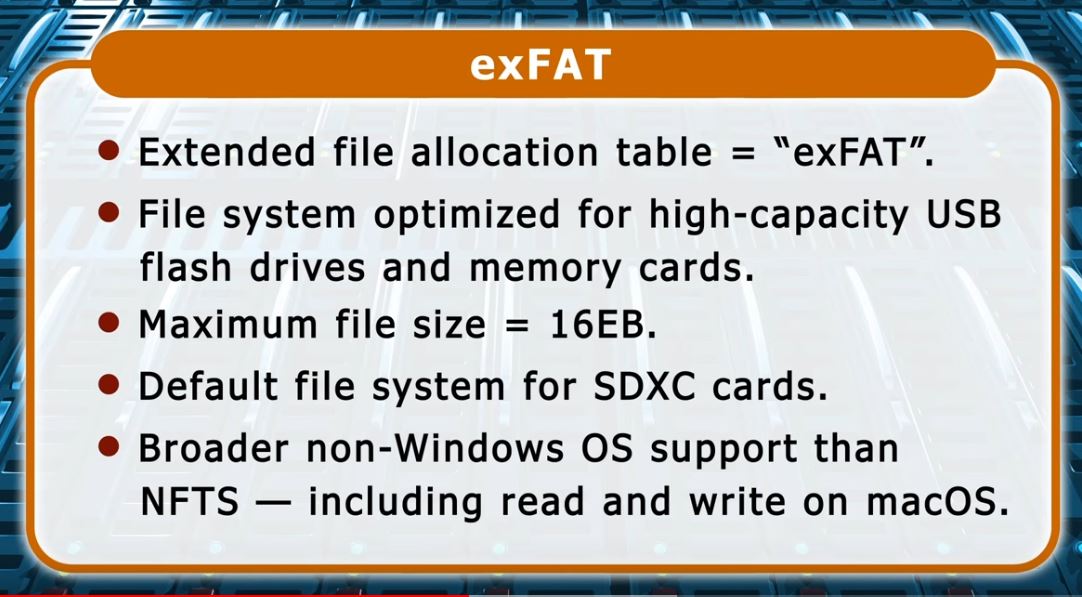
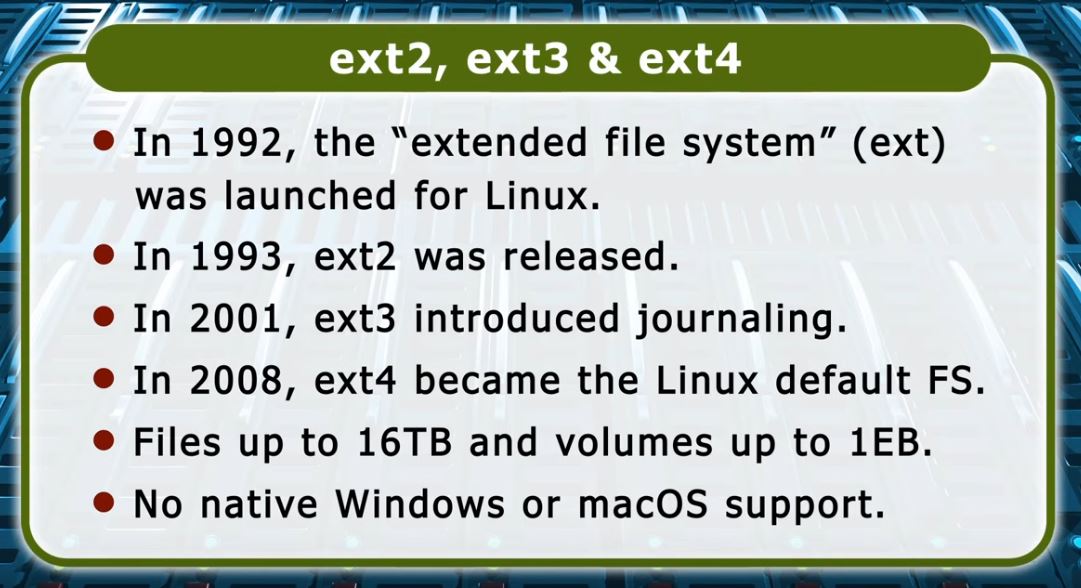

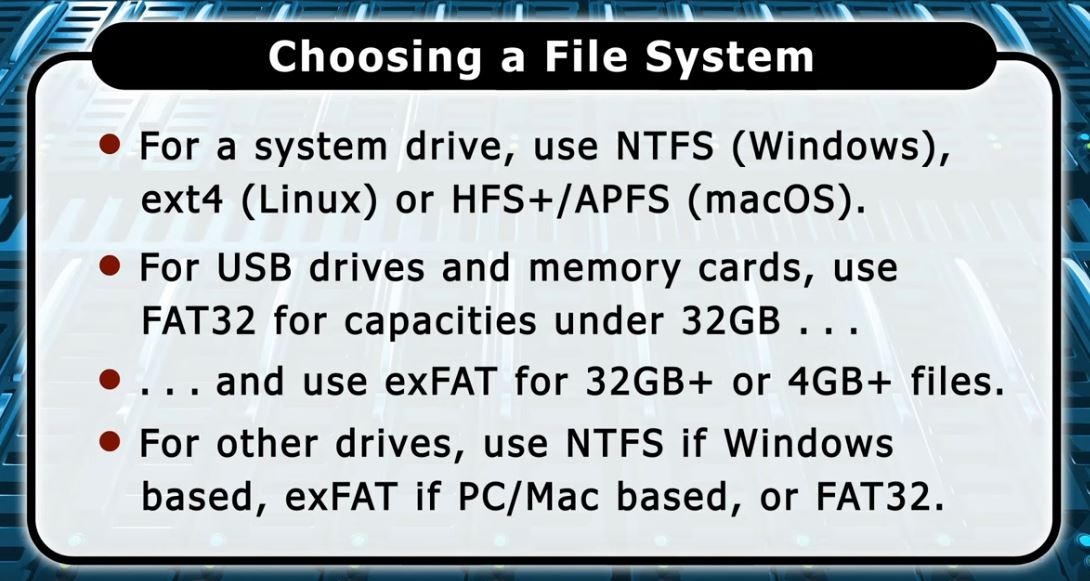
Link: File Systems Explained YouTube Video
![]()
![]() - This page last updated on 20 June 2019
- This page last updated on 20 June 2019